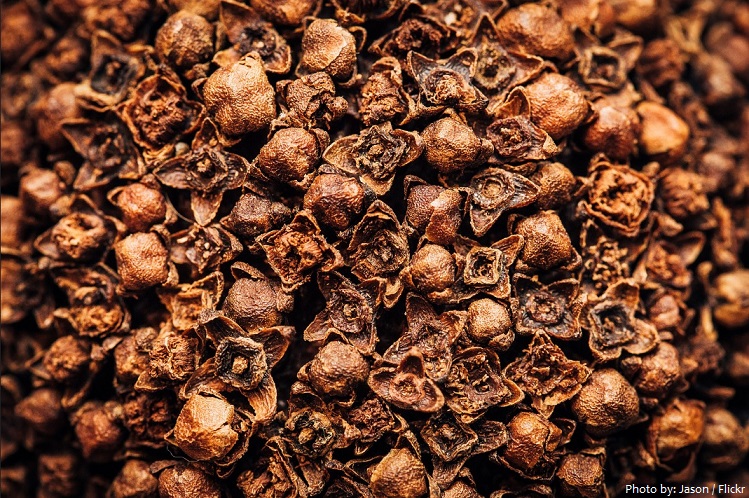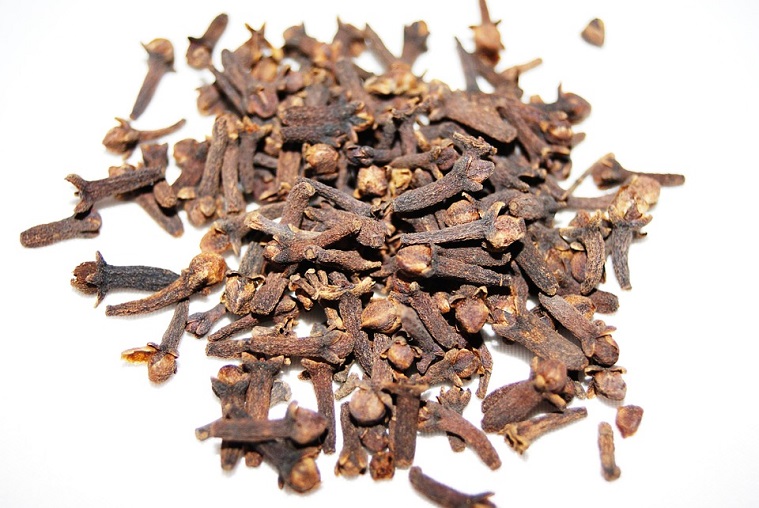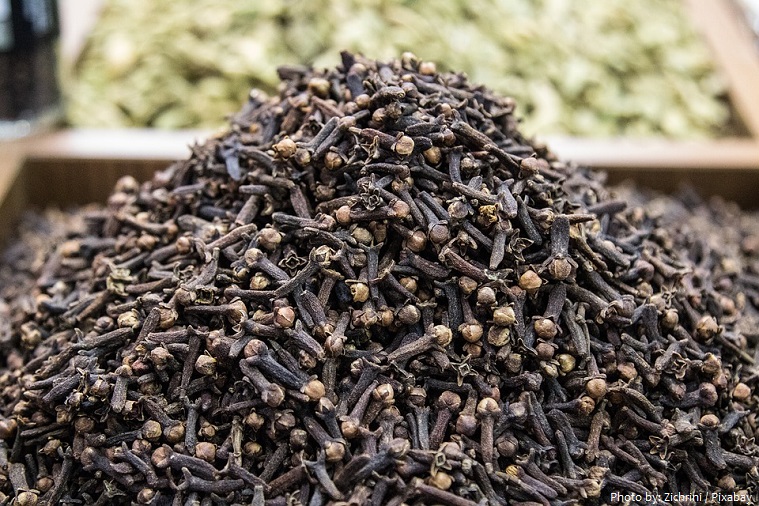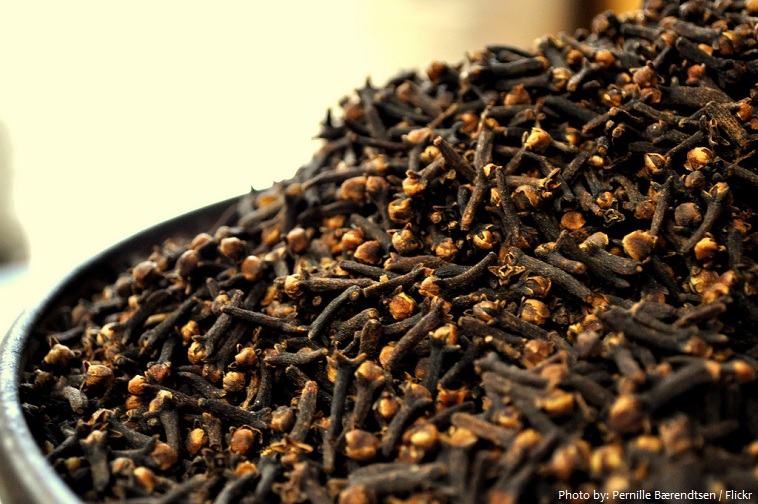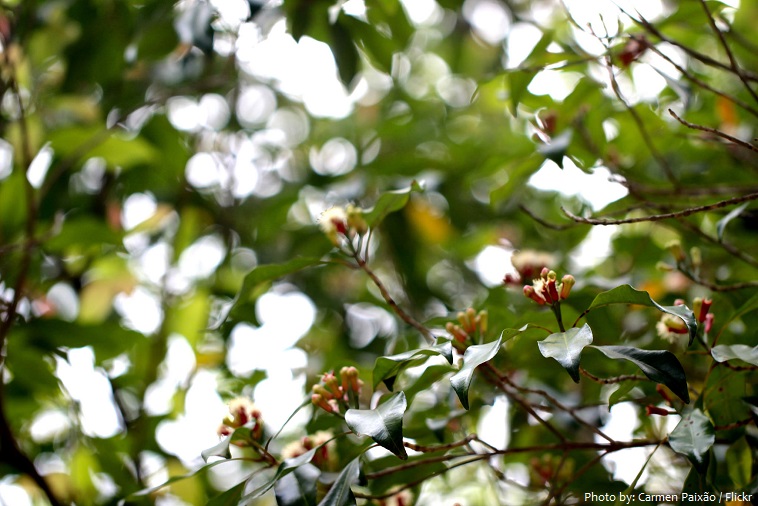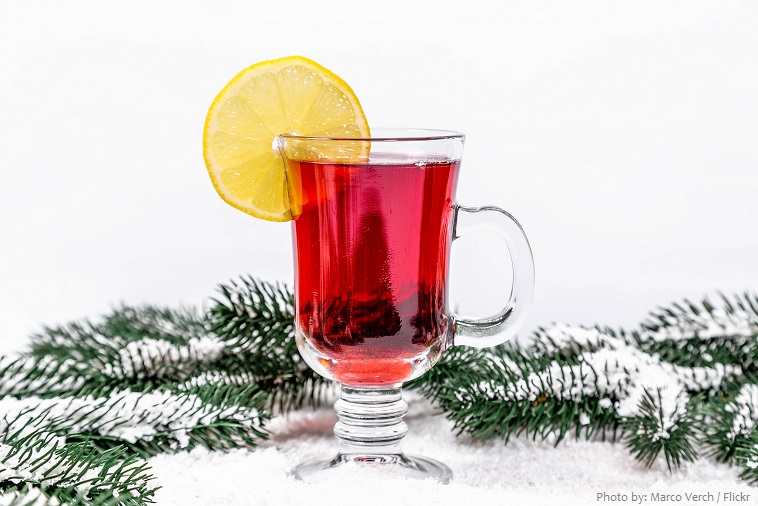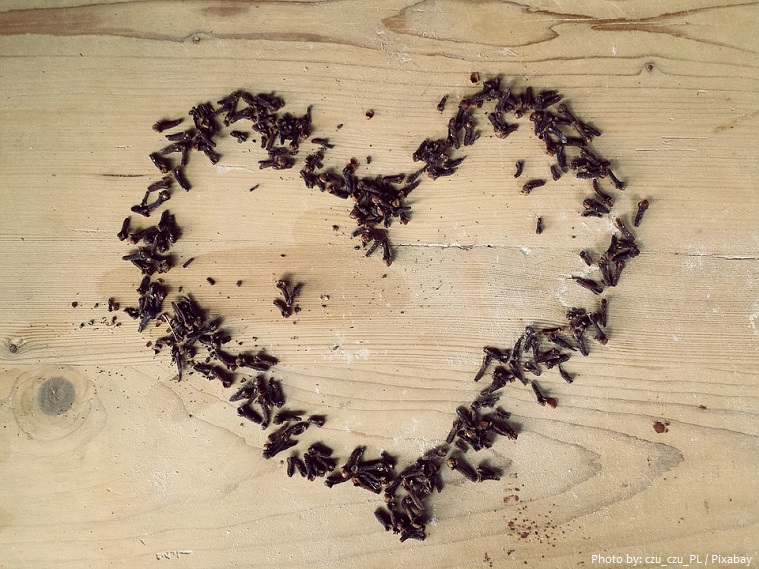Cloves are the rich, brown, dried, unopened flower buds of Syzygium aromaticum, an evergreen tree in the myrtle family.
The name comes from the French “clou” meaning nail.
It is believed that cloves are indigenous to the Moluccas, or Spice Islands, of Indonesia.
Archeologists have found cloves in a ceramic vessel in Syria, with evidence that dates the find to within a few years of 1721 BC.
Cloves, along with nutmeg and pepper, were highly prized in Roman times, and Pliny the Elder once famously complained that “there is no year in which India does not drain the Roman Empire of fifty million sesterces.”
As early as 200 BC, envoys from Java to the Han-dynasty court of China brought cloves that were customarily held in the mouth to perfume the breath during audiences with the emperor.
Cloves were traded by Muslim sailors and merchants during the Middle Ages in the profitable Indian Ocean trade, the clove trade is also mentioned by famous Arabian Nights characters such as Sinbad the Sailor are known to have bought and sold cloves from India.
During the late Middle Ages, cloves were used in Europe to preserve, flavour, and garnish food.
Clove cultivation was almost entirely confined to Indonesia, and in the early 17th century the Dutch eradicated cloves on all islands except Amboina and Ternate in order to create scarcity and sustain high prices.
In the latter half of the 18th century the French smuggled cloves from the East Indies to Indian Ocean islands and the New World, breaking the Dutch monopoly.
In Britain in the 17nth and 18th centuries, cloves were worth at least their weight in gold, due to the high price of importing them.
Today, cloves are commercially harvested primarily in: Indonesia, Madagascar, Tanzania (Zanzibar), Sri Lanka, Comoros and Kenya; According to the Food and Agriculture Organization (FAO), Indonesia produces most of the cloves – about 75 percent of the world’s total.
Cloves are available throughout the year due to different harvest seasons in different countries.
The clove tree is an evergreen that grows from 8 to 12 meters (26 to 39 feet) tall, with large leaves and crimson flowers grouped in terminal clusters.
The flower buds initially have a pale hue, gradually turn green, then transition to a bright red when ready for harvest.
Cloves are harvested at 1.5 to 2 centimeters (0.6 to 0.8 inches) long, and consist of a long calyx that terminates in four spreading sepals, and four unopened petals that form a small central ball.
Clove can be used either whole or in a ground form for cooking and commonly flavor a variety of foods, from sweet to savory.
Cloves may be used to give aromatic and flavor qualities to hot beverages especially red wine.
It pairs well with cinnamon, allspice, vanilla and basil, as well as onion, citrus peel, star anise, or peppercorns.
Cloves contain 14 to 20 percent essential oil, the principal component of which is the aromatic oil eugenol. They are strongly pungent owing to eugenol, which is extracted by distillation to yield oil of cloves.
Cloves are an excellent source of manganese. They are also a very good source of vitamin K and dietary fiber. They are also a good source of iron, magnesium and calcium.
The health benefits of clove include good digestion, protecting the liver, fighting against oral diseases, boosting the immune system, stimulate blood circulation, controlling diabetes, improve respiratory health, fight Inflammation, good for headaches, relieve stress, preserving bone quality and fighting against cancer.
Cloves are used in Indian Ayurvedic medicine, Chinese medicine, and western herbalism and dentistry where the essential oil is used as an anodyne (painkiller) for dental emergencies.
The spice is used in a type of cigarette called kretek in Indonesia. Clove cigarettes have been smoked throughout Europe, Asia and the United States. Starting in 2009, clove cigarettes must be classified as cigars in the US.
The clove tree that experts believe is the oldest in the world, named Afo, is on Ternate (island in the Maluku Islands). The tree is between 350 and 400 years old. Tourists are told that seedlings from this very tree were stolen by a Frenchman named Pierre Poivre in 1770, transferred to the Isle de France (Mauritius), and then later to Zanzibar.
